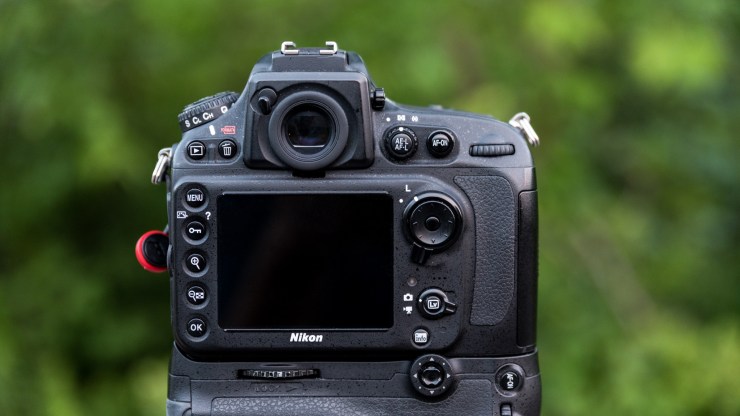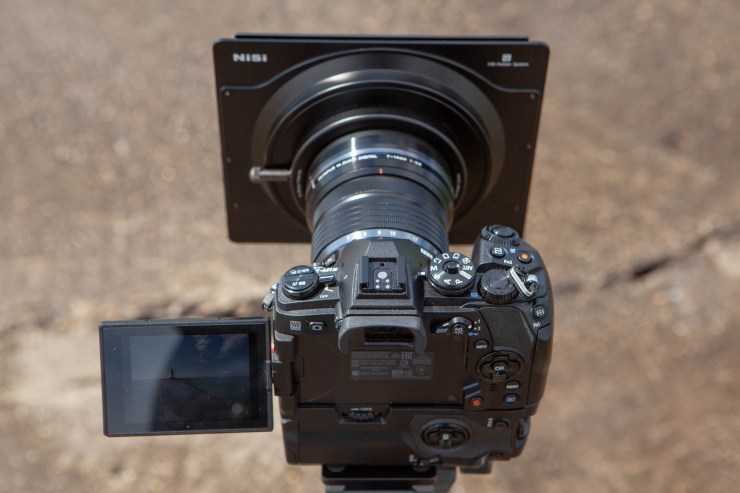When the Olympus OM-D E-M1X was announced, the argument over electronic viewfinder (EVF) vs. optical viewfinders (OVF) came up in a lot of my conversations. Those of us who have been mirrorless users for a while have surely gotten used to our EVF, but it’s one of the biggest concerns I hear from those photographers who have a DSLR system, which employs an OVF.
And I hear those concerns. As a person who ditched the world of full-frame DSLRs nearly two years ago for a mirrorless, micro four-thirds sensor, I had the same worries. It took me a bit to get used to the new look through my viewfinder. It felt foreign to me. But once I got used to it, I never looked back.
What’s an optical viewfinder?
An OVF works by reflecting the image coming through the lens off of the DSLR’s mirror into the viewfinder, and thus, to your eye. The advantages here are that there’s no time lag and the clarity and resolution is perfect. OVFs also save on battery life, and they’re often recognized as being easier to use in low light situations (though I personally believe that to be personal preference).

On the downside, OVFs oftentimes do not show the entire frame of your photograph. However, over time and with new camera developments, the amount shown has gotten larger and larger. OVFs can also be dimmer on entry-level cameras, versus what pro-grade cameras might have. This makes it difficult to see the end result in terms of brightness and contrast. OVFs also take up space — hence one of the reasons why DSLR bodies are considerably larger than mirrorless bodies.
What’s an electronic viewfinder?
Because there’s no mirror in a mirrorless camera, the EVF has replaced the OVF. This also means that manufacturers are able to create more compact, lightweight camera bodies, as it’s not relying on that mirror.
Much of the excitement over EVFs is in the experience it delivers to photographers. Instead of getting 90% or 95% frame view of an OVF, you get 100% of what the camera’s sensor is going to capture. It also allows you to look at the end picture before you click the shutter button. The EVF shows you dynamic range, depth of field, white balance, contrast, saturation and more. It’s basically the “What You See is What You Get” view.

You can also get a more accurate representation of your camera’s level or virtual horizon tools. Finally, if you focus manually or are a video shooter, you can also take advantage of focus peaking in the viewfinder — not just on the live view screen like DSLRs. EFVs are live view all the time.
Despite all the positives, there are some downsides. The refresh rate isn’t as fast as OVFs which work at the speed of light. This has gotten immensely better since EVFs were first introduced. The biggest downside is probably the way EVFs drain your camera’s battery. Instead of taking one extra battery on a photoshoot, you might need to take two.
So, what’s better?
Having used both types of viewfinders in multiple camera bodies, I personally enjoy using EVFs more, as it gives me a better representation of what my photograph will be. No more guessing. That being said, if you’re used to an OVF in your DSLR, switching will definitely be an adjustment. For me, it was big change that took a few days. I remember my eyes not responding to the super-sharp view I was seeing in the viewfinder. Once you use the camera for a few days, your eyes get used to it instantaneously.
That said, there’s not a “better” answer here. It’s all about personal preference. And while camera companies are slowly embracing the mirrorless world, photographers are moving to them in droves. DSLRs with OVFs will still exist for quite a while.
Tell your story with the second annual Visual Storytelling Conference!
Experience four days of interactive, online training sessions featuring a range of educational content with experienced photographers and content creators. This free event kicks off with a series of technical boot camps to build essential skills, followed by live, online sessions on photography, video, business and social media. Join live from March 10-13, 2022!
